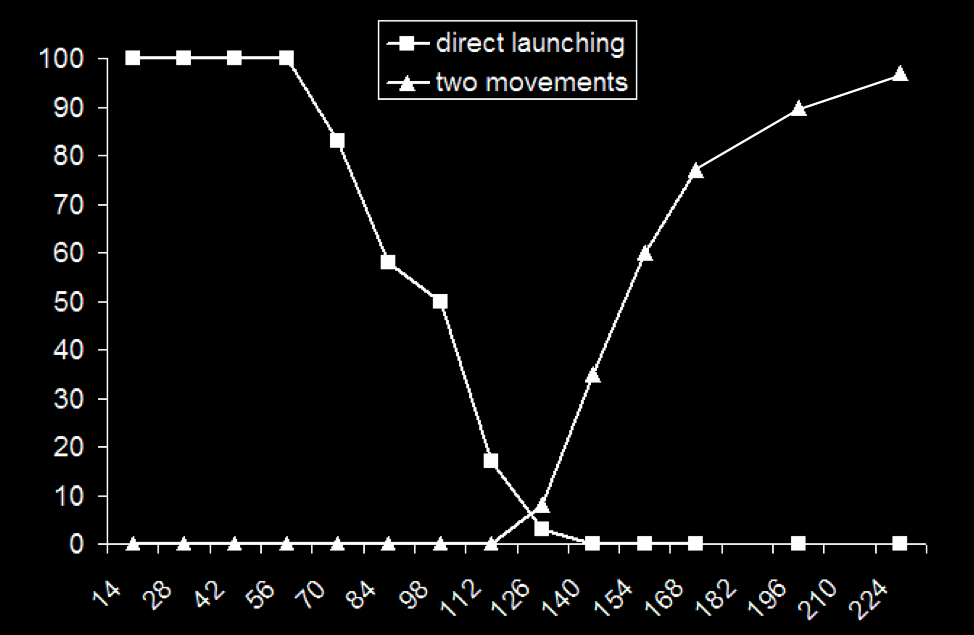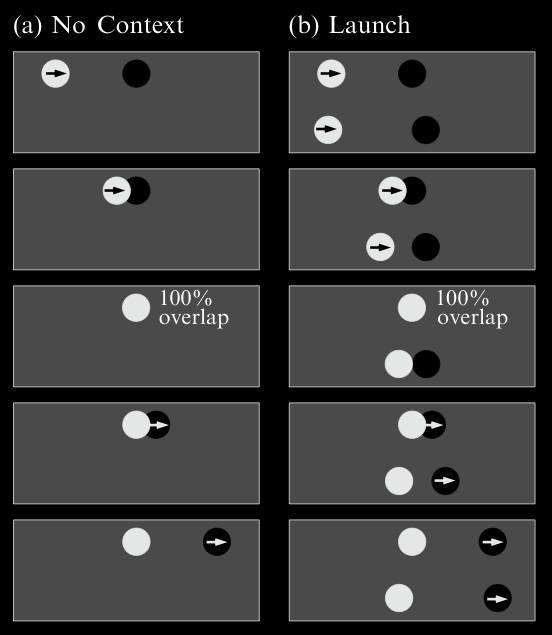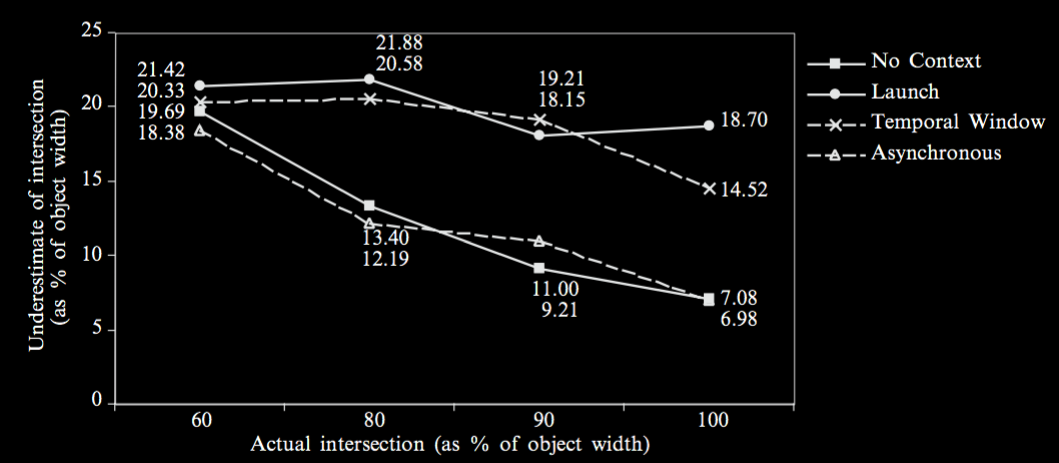Click here and press the right key for the next slide (or swipe left)
also ...
Press the left key to go backwards (or swipe right)
Press n to toggle whether notes are shown (or add '?notes' to the url before the #)
Press m or double tap to slide thumbnails (menu)
Press ? at any time to show the keyboard shortcuts
Perceptual Processes
How to get beyond intuition?
Step 1: Distinguish the effect from its intepretation.
Michotte: the experience of launching depends on interactions among various factors including
- the relative speeds of the two objects
- the delay between the first and second objects’ movements
- the spatial gap between the two objects
- the trajectories of the two objects.

Michotte 1946 [1963], p. 115 table IX (part)

drawn from Michotte 1946 [1963], p. 115 table IX (part)
- The launching effect: a 50ms difference in the delay between two movements changes subjects’ judgements, ...
How to get beyond intuition?
Step 1: Distinguish the effect from its intepretation.
Step 2: Which processes underpin the effect?
Guess how the launching effect works!
judgement-independent

Thines et al (1991)
what did you see?
what did you see?
causal capture

Scholl and Nakayama 2004, figure 2 (part)

Scholl and Nakayama 2004, figure 5

Scholl and Nakayama 2004, figure 4
How to get beyond intuition?
Step 1: Distinguish the effect from its intepretation.
Step 2: Which processes underpin the effect? Perceptual processes!
What does this tell us about the emergence of knowledge of causal interactions in development?